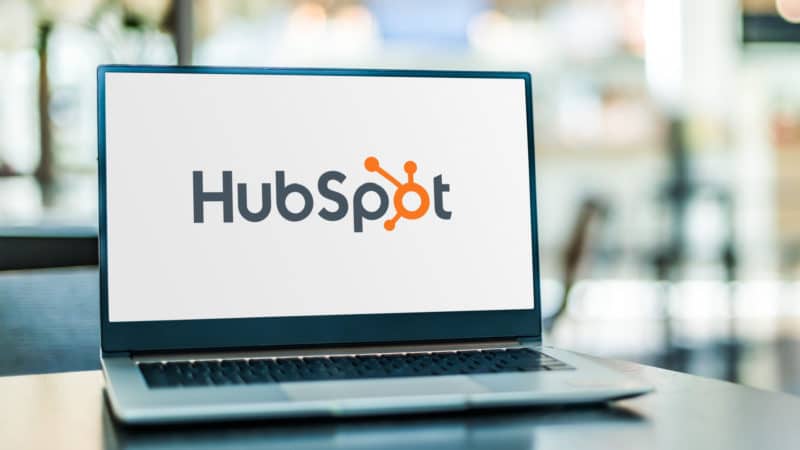B2C marketing deals with consumer purchases, which means B2C marketers are targeting individuals or small groups of people who make purchase decisions.
High-end consumer purchases, like automobiles and home improvement projects, will bear some resemblance to a B2B engagement because of their cost. But generally speaking, a couple considering a B2C purchase will have an easier time coming to a decision than a business buying group with varied wants and needs in a B2B setting.
As a result, the most significant differences between B2C marketing and B2B marketing involve the number of people involved in the purchase decision and the length of the sales cycle.
Marketing automation in B2B circles helps marketers nurture leads by sending them information about products and services. When done well, the goal is for the brand to be top of mind when the prospect enters the buying cycle.
In B2C, many of the purchases happen quickly — sometimes impulsively. And putting a brand in front of a consumer in a way that captures attention and spurs them to action is the goal of B2C marketing automation.
What is B2C marketing automation?
If you’ve ever visited an online retailer to browse, and perhaps even added an item to your cart but never made the purchase, the retailer probably noticed. You might receive an email a day later reminding you of the items in your cart.
While often associated with email, marketing automation in B2C, in particular, is used across channels. A similar message about items left in a cart could appear on the retailer’s online chat the next time you visit the site.
How B2C marketing automation differs from B2B
Both B2B and B2C marketing automation help you, as a marketer, maintain contact with prospects and customers while reducing manual labor. The personalization and volume of messages required to connect with your audiences today simply isn’t possible without some sort of automation involved.
Here are the areas where B2B and B2C marketing automation differ the most.
Focus
B2C automation prioritizes the customer journey. Marketers think of this as nurturing leads with personalized content based on browsing habits and past purchases. For consumers, this looks like messages informing you when an item related to a previous purchase goes on sale. In B2B, the focus is on building relationships with decision-makers, often with longer sales cycles.
Personalization
B2C marketing thrives on hyper-personalization. Automated messages use customer data to target specific needs and interests. B2B personalization might involve tailoring messages to a company’s industry or specific challenges. The B2B strategy of account-based marketing (ABM) is built around creating messages for employees at specific target accounts.
Metrics
B2C automation success hinges on metrics like conversion rates, click-through rates and even email open rates for some marketers. B2C marketers are often A/B testing different strategies to optimize campaigns. B2B success might be measured by lead generation, qualified leads passed to sales and, ultimately, revenue.
Dig deeper: What is B2C marketing? Definitions and strategies
B2C marketing automation examples
Given the amount of data available to marketers in most B2C organizations, you’re able to create a number of programs to help drive purchases and delight customers — all powered by marketing automation.
Post-purchase upsell with educational content
Let’s say you purchase a bicycle from a retailer. Depending on the model, this can be a high-end or moderately sized purchase. Retail marketers are always looking to increase their revenue per customer. As a consumer, you want to learn about the exciting possibilities ahead using your new bicycle.
The win-win situation for both marketer and customer is a short series of emails that:
- Thank you for your purchase and includes accessories like helmets (don’t bike without one).
- Include tips on bike maintenance to keep you riding throughout the year.
- Discuss the differences in gear and accessories, like which types of tires work best on which surfaces.
Re-purchase reminder
Think about all the things you buy on a regular, cyclical basis. Using purchase data, B2C marketers know when that 50-lb. bag of pet food is likely to run out or guess that the kids’ swimsuits you bought early last summer don’t fit anymore (because they don’t).
Timely reminders related to past purchases can help spur new purchases. And that’s done with marketing automation.
The abandoned cart reminder
As mentioned earlier, the reminder that you put items in your cart but didn’t checkout helps marketers recover lost revenue. It’s also helpful to consumers. After all, they didn’t remove the items from their cart, they simply moved on. And while that could be a sign they lost interest, it could also be a sign that they were interrupted during their shopping or didn’t have a credit card handy for checkout.
Software for B2C marketing automation
There are a number of marketing automation platforms available to marketers, including applications from all of the big names in martech. Here’s a sampling of marketing automation solutions that are popular with B2C marketers in particular.
Intuit Mailchimp
Mailchimp is a well-known platform thanks to its user-friendly interface and strong email marketing features. It’s a popular email and marketing automation choice for beginners and smaller businesses.
HubSpot Marketing Hub
HubSpot’s Marketing Hub offers a wide range of marketing tools, including email marketing, social media management and analytics. It’s a comprehensive platform for businesses with a team to use it.
Klaviyo
Klaviyo is an ecommerce-focused platform with powerful features for email marketing, SMS marketing and customer segmentation. It offers strong integration with online stores, which makes it a popular choice in B2C circles.
ActiveCampaign
ActiveCampaign offers a user-friendly platform with drag-and-drop automation workflows and strong campaign management features. It’s a good option for businesses seeking a balance of features and ease of use.
Insider
Insider offers a powerful platform with a focus on deep customer personalization using AI and machine learning. It’s full of features that span the capabilities of customer data platforms (CDPs) and marketing automation. It’s worth exploring for businesses looking for advanced features and a focus on omnichannel marketing.
These are just a few examples of the marketing automation tools B2C marketers are using today.
Dig deeper: 6 ways email marketing can elevate customer engagement and loyalty
Tactics for B2C marketing automation
Popular B2C marketing tactics that rely on marketing automation fall into three basic groups.
Hyper-personalized customer journeys
We’re all familiar with automated welcome emails and other messages thanking us for making a purchase, summarizing our order and including product recommendations based on our purchase history. They help reinforce the brand, highlight popular products and exclusive offers, based on the data available about our preferences.
Behavioral-triggered messages include the aforementioned abandoned cart emails, as well as offers for products related to a recent purchase.
Lifecycle marketing uses purchase history and loyalty data to deliver exclusive offers or rewards.
Multichannel engagement
Omnichannel campaigns go beyond email. With marketing automation, marketers are able to orchestrate campaigns across various channels like SMS, social media and push notifications. The goal is to create a cohesive brand experience that reaches customers on their preferred platforms, which increasingly go beyond email.
Personalized chatbots on a website can answer customer queries, offer product recommendations or guide consumers through the buying process. This level of 24/7 support and personalized interaction is growing in its capabilities thanks to artificial intelligence and machine learning.
Advanced lead nurturing and conversion optimization
For expensive purchases in particular, lead scoring works by assigning points to customer actions (e.g., downloading a guide, visiting a specific product page) to identify leads getting ready to buy. Thanks to marketing automation, marketers can trigger targeted campaigns to nurture these leads and move them closer to conversion.
Marketing automation also makes it easier to conduct A/B testing: By testing different versions of messages, including email subject lines, calls to action and landing pages, marketers can better understand what resonates best with their audience. Marketing automation platforms make this process efficient by building in A/B testing capabilities and allowing marketers to optimize their campaigns for better results based on the testing.
Automated lead retargeting is a popular way for marketers to keep their brand top of mind after a visitor leaves their website. This is made possible by website visitor tracking and marketing automation, which help targeted ads across various platforms.
Prerequisites for B2C marketing automation success
Marketing automation tools are powerful solutions. But the success of the marketing that’s built with automation relies on a solid foundation. Without a commitment to the following areas, marketing automation will fail to meet its expectations.
Data
There are three areas where businesses need to address their data strategy prior to deploying marketing automation tools:
- Customer data collection. A solid foundation of customer data is required to personalize your marketing efforts. This includes email addresses, purchase history, browsing behavior and customer preferences. Building a robust customer relationship management (CRM) system is crucial.
- Data segmentation. Segmenting the audience based on demographics, interests and purchase behavior allows marketers to create targeted campaigns that resonate more with each segment.
- Data quality. “Garbage in, garbage out,” as they say. Solutions built on inaccurate or incomplete data will lead to poor targeting and ultimately, ineffective campaigns. Regularly cleanse and update your data to ensure its accuracy.
Content
Marketers running campaigns with marketing automation need to feed the content machine. That’s why content marketing is such an important part of modern marketing. The content needs of campaigns built on marketing automation fall into two main areas:
- Compelling content creation. Automation handles the personalization and the delivery, but marketers need to supply high-quality content that engages the audience. This could include informative blog posts, product descriptions, eye-catching visuals or entertaining videos tailored to specific audience segments.
- Content Calendar. Marketers should plan their assets in advance to ensure a consistent flow of engaging content across different channels. Marketing automation platforms help schedule and automate content delivery, but the content itself requires strategic planning.
Embrace experimentation
Whether it’s A/B testing or campaign optimization, marketing automation opens up a world of testing and experimentation. Marketers shouldn’t assume they know what works from the start. Test email subject lines, landing pages, calls to action and more to find what’s resonating with the audience. One never knows what they’ll learn.
By focusing on these prerequisites, B2C businesses can effectively use marketing automation to create a data-driven, personalized customer experience that drives sales and fosters long-term customer loyalty.
Email:
See terms.
The post B2C marketing automation: The tools, tactics and prerequisites for success appeared first on MarTech.




